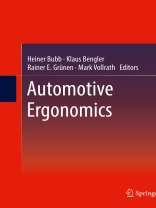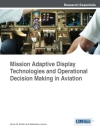Ergonomics teaches how to design technology in such a way that it is optimally adapted to the needs, wishes and characteristics of the user. In this context, the concept of the human-machine system has become established. In a systematic way and with a detailed view of the complicated technical and perceptual psychological and methodological connections, this book explains the basics of automotive ergonomics with numerous examples. The application is shown in examples such as package, design of displays and control elements, of environmental ergonomics such as lighting, sound, vibrations, climate and smell. The design of driver assistance systems from an ergonomic perspective is also a central topic. The book is rounded off by methods of ergonomic vehicle development, the use of mock-ups, driving simulators and tests in real vehicles and prototypes. For the first time, those responsible in the automotive industry and in the field of relevant research are provided with a specializedsystematic work that provides the ergonomic findings in the design of today’s automobiles. This provides planners and designers of today’s automobiles with concrete information for ergonomic product development, enabling them to keep an eye on decisive requirements and subsequent customer acceptance.
This book is a translation of the original German 1st edition Automobilergonomie by Heiner Bubb, Klaus Bengler, Rainer E. Grünen & Mark Vollrath, published by Springer Fachmedien Wiesbaden Gmb H, part of Springer Nature in 2015. The translation was done with the help of artificial intelligence (machine translation by the service Deep L.com). A subsequent human revision was done primarily in terms of content, so that the book will read stylistically differently from a conventional translation. Springer Nature works continuously to further the development of tools for the production of books and on the related technologies to support the authors.
Table des matières
Inauguration.- The Control Loop Paradigm of Ergonomics.- The Human Being as a Driver.- Anatomical and Anthopometric Characteristics of the Driver.- Human Models.- System Ergonomics of the Vehicle.- Anthropometric Vehicle Design.- Design of Condition Safety.- Driver Assistance.- Methods of Ergonomic Vehicle Development.- Measurement techniques.- Statistical Methods.- Outlook.
A propos de l’auteur
Prof. Dr. rer. nat. habil. Heiner Bubb was head of the chair of ergonomics at the TU Munich until his retirement.
Prof. Dr. Klaus Bengler heads the Chair of Ergonomics at the TU Munich.
Dipl.-Ing. Rainer E. Grünen was Global Senior Expert for the cross-sectional function of ergonomics at Adam Opel AG in Rüsselsheim and is now a freelance consult engineer.
Prof. Dr. Mark Vollrath heads the Chair of Engineering and Traffic Psychology at the TU Braunschweig.












